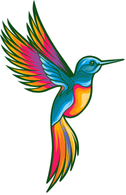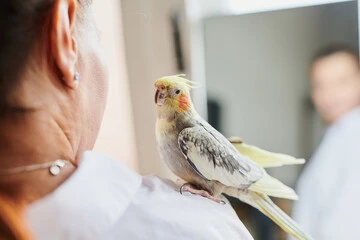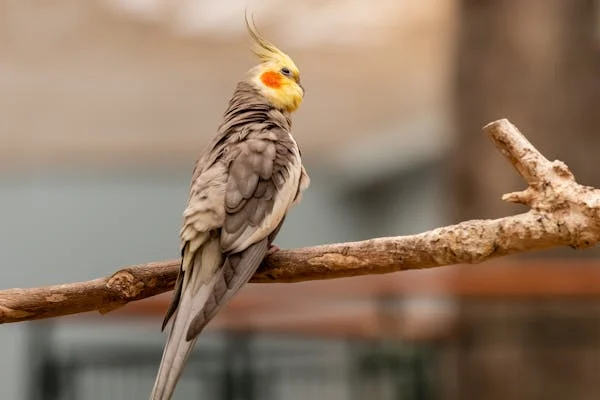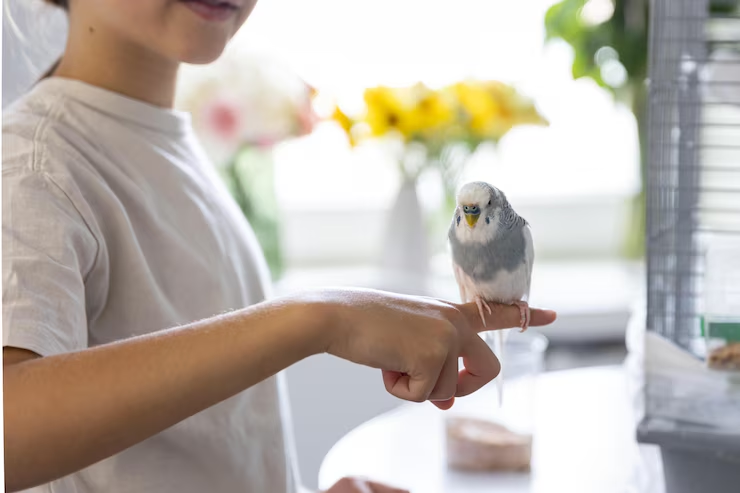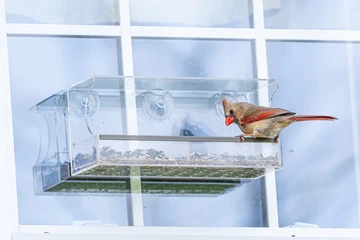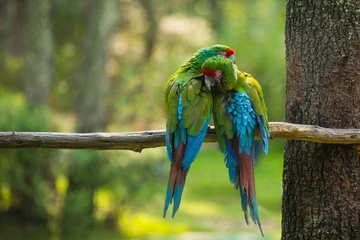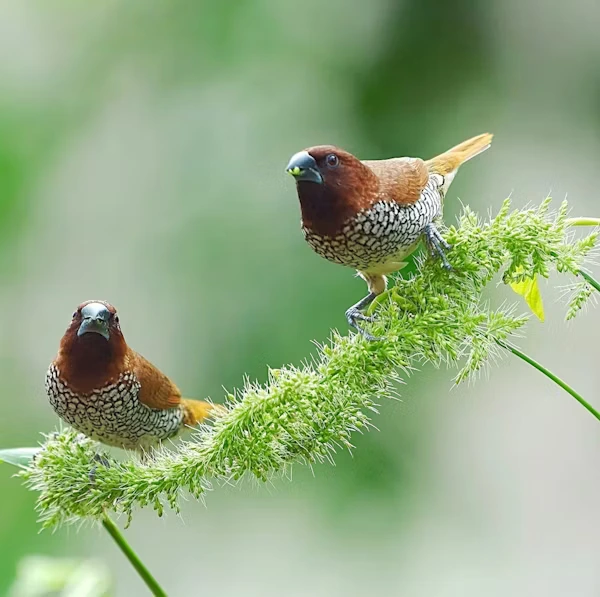Blue Fronted Parrot: How to Give the Best Loving Home

Are you considering adding a feathered friend to your family? The Blue Fronted Parrot, also known as the Blue Fronted Amazon parrot, might be the perfect companion for you. These charismatic, intelligent birds have captured the hearts of bird enthusiasts worldwide with their vibrant personalities and remarkable talking abilities.
In this comprehensive guide, we’ll explore everything you need to know about the Blue Fronted Amazon parrot—from their striking appearance and natural behaviors to their care requirements and training techniques. Whether you’re a first-time bird owner or an experienced aviculturist, this guide will provide valuable insights into these fascinating creatures.
Table of Contents
Introduction to the Blue Fronted Amazon
The Blue Fronted Amazon parrot (Amazona aestiva) is one of the most popular and recognizable parrot species in the pet trade. Named for the distinctive blue marking on their forehead, these medium-sized parrots belong to the Amazon parrot family, which includes several species native to the Americas.
Blue Fronted Parrots are prized for their intelligence, sociability, and exceptional talking ability. They form strong bonds with their human caregivers and can live for decades when properly cared for, making them lifelong companions that become integral members of the family.
Appearance and Characteristics

The Blue Fronted Parrot is a striking bird with several distinctive features:
| Feature Description | |
|---|---|
| Size | 14-15 inches (35-38 cm) in length |
| Weight | 400-500 grams |
| Lifespan | 40-80 years in captivity |
| Coloration | Primarily green body with blue forehead, yellow face, and occasional red shoulder patches |
| Beak | Strong, hooked black beak |
| Eyes | Iris changes from dark to orange/red as they mature |
What makes the Blue Fronted Amazon parrot truly unique is the variation in their facial coloration. While all have the signature blue forehead patch, the extent of yellow on the face and head can vary significantly between individuals, making each bird visually distinctive.
Young Blue Fronted Parrots have dark irises that gradually change to an orange or reddish color as they mature, often completing this transformation by 2-3 years of age. This color change is one way experienced bird keepers can estimate a bird’s age.
Natural Habitat and Distribution
In their native environment, Blue Fronted Amazon parrots inhabit a range spanning several South American countries, including:
- Northern Argentina
- Eastern Bolivia
- Paraguay
- Brazil (primarily in the Pantanal and cerrado regions)
These birds thrive in a variety of woodland habitats, from tropical forests to palm groves and savannahs. They are highly adaptable, which explains their success both in the wild and as companion pets.
In their natural habitat, Blue Fronted Parrots are often found in pairs or small flocks, especially when foraging or gathering at communal roosting sites. They typically nest in tree cavities, which they sometimes enlarge using their powerful beaks.
Behavior and Social Structure
Understanding the natural behavior and social structure of the Blue Fronted Amazon parrot is essential for providing appropriate care in captivity:
Wild Behavior
- Form strong pair bonds that often last for life
- Travel in flocks ranging from a few pairs to several dozen birds
- Highly vocal, especially at dawn and dusk
- Extremely social, with complex communication systems
- Forage actively throughout the day
- Rest during the hottest part of the day
Captive Behavior
Blue Fronted Parrots retain many of their wild instincts in captivity. They are:
- Intelligent and curious, requiring mental stimulation
- Social creatures that need regular interaction
- Capable of forming deep bonds with human caregivers
- Prone to behavioral issues if bored or neglected
- Territorial about their space and possessions
- Active and playful, especially during morning and evening hours
“Understanding your Blue Fronted Amazon’s natural behaviors is the key to developing a strong relationship based on mutual trust and respect.” – Dr. Irene Pepperberg, renowned parrot researcher
Diet in the Wild and in Captivity
A proper diet is crucial for maintaining the health and well-being of your Blue Fronted Amazon parrot. In the wild, these birds consume a varied diet that includes:
- Fruits and berries
- Nuts and seeds
- Leaf buds and blossoms
- Plant shoots
- Occasional insects and larvae
Recommended Captive Diet
For optimal health, a captive Blue Fronted Parrot should receive:
- High-quality pellets (70%): Formulated to provide balanced nutrition
- Fresh vegetables (15%): Leafy greens, carrots, bell peppers, etc.
- Fresh fruits (10%): Apples, berries, melons (moderate due to sugar content)
- Nuts and seeds (5%): Almonds, walnuts, sunflower seeds (limited due to fat content)
Foods to Avoid:
- Avocado (toxic to birds)
- Chocolate
- Caffeine
- Alcohol
- Onions and garlic
- High-salt or high-fat foods
Lifespan and Common Health Issues
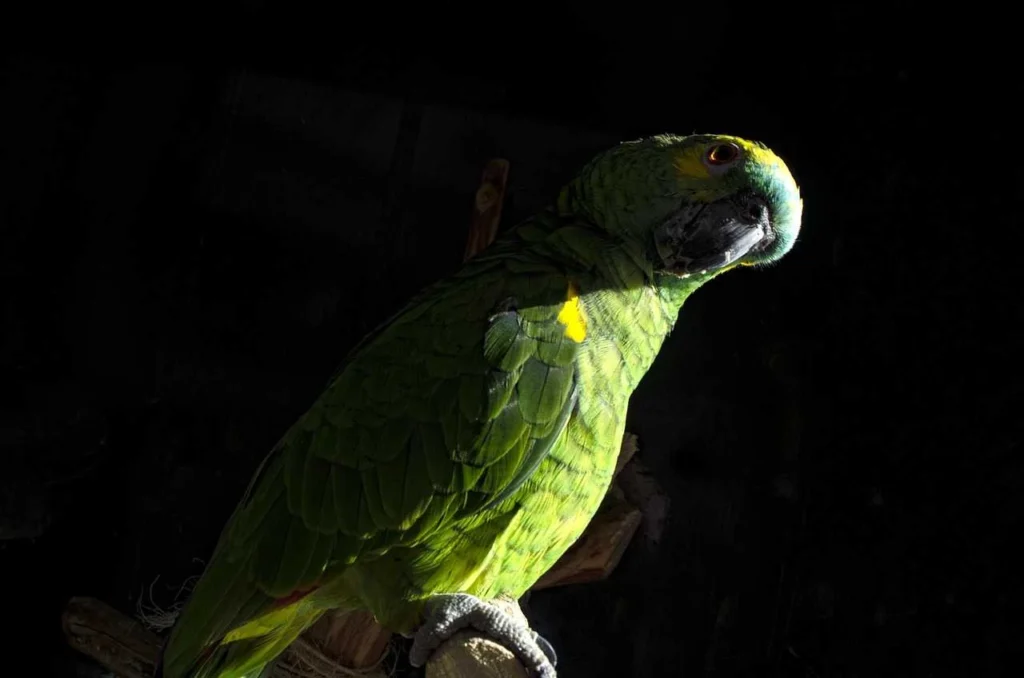
With proper care, the Blue Fronted Amazon parrot lifespan can extend to 40-80 years, making them a lifelong commitment. Their longevity is both a blessing and a responsibility, requiring owners to plan for their care potentially spanning decades.
Common Health Concerns
Despite their hardiness, Blue Fronted Parrots can suffer from several health issues:
- Psittacosis (Parrot Fever): A bacterial infection that can be transmitted to humans
- Proventricular Dilatation Disease (PDD): A viral disease affecting the digestive system
- Aspergillosis: A fungal infection affecting the respiratory system
- Feather plucking: Often caused by stress, boredom, or medical issues
- Nutritional deficiencies: Particularly vitamin A deficiency
- Obesity: Common in birds fed high-fat diets
Regular veterinary check-ups with an avian specialist are essential for early detection and treatment of these conditions. An annual health examination is recommended for younger birds, with bi-annual check-ups for birds over 10 years old.
Breeding and Reproduction
In the wild, Blue Fronted Amazon parrots typically reach sexual maturity at 3-4 years of age. They are monogamous breeders that form strong pair bonds. The breeding season generally coincides with the rainy season in their native habitat.
Breeding Blue Fronted Parrots in captivity requires specialized knowledge and should only be undertaken by experienced aviculturists. Important considerations include:
- Nest boxes should be approximately 12″x12″x24″ with an entrance hole of about 3-4 inches
- The average clutch consists of 3-4 eggs
- Incubation period is typically 24-26 days
- Chicks fledge at about 9-12 weeks
- Hand-rearing requires significant expertise and commitment
Responsible breeding practices are essential to maintain genetic diversity and physical health in captive populations.
Caring for a Blue Fronted Amazon Parrot
Providing proper care for your Blue Fronted Amazon parrot requires attention to several key areas:
Housing Requirements
Your Blue Fronted Parrot needs a spacious cage that allows for comfortable movement and exercise:
- Minimum cage size: 36″W x 24″D x 48″H (larger is always better)
- Bar spacing: 3/4″ to 1″ (to prevent escape or injury)
- Material: Stainless steel is ideal (avoid zinc or lead-containing metals)
- Accessories: Multiple perches of varying diameters and textures
- Placement: In a family area but away from drafts, direct sunlight, and cooking fumes
Essential Supplies
For proper Blue Fronted Amazon parrot care, you’ll need:
- Food and water dishes (stainless steel or ceramic)
- Variety of perches (natural wood, rope, etc.)
- Selection of appropriate toys (rotated regularly)
- Grooming supplies (nail trimmers, towels)
- Natural-light spectrum lighting if outdoor time is limited
- Shower perch or misting bottle for bathing
Daily Care Routine
Establishing a consistent routine helps your Blue Fronted Parrot feel secure:
- Fresh food and water daily
- Cage cleaning (spot clean daily, deep clean weekly)
- Out-of-cage time (minimum 2-3 hours daily)
- Social interaction and mental stimulation
- Regular health observations
Training and Enrichment
The intelligence of Blue Fronted Amazon parrots makes them excellent candidates for training. Blue Fronted Amazon parrot training should focus on positive reinforcement techniques:
Basic Training Tips
- Start with trust-building: Let your bird become comfortable with you before attempting training
- Use positive reinforcement: Reward desired behaviors with treats, praise, or attention
- Keep sessions short: 5-15 minutes multiple times daily
- Be consistent: Use the same cues and rewards
- Target training: Teach your bird to touch a target stick as a foundation for more complex behaviors
Enrichment Ideas
Mental stimulation is crucial for preventing boredom and behavioral problems:
- Foraging toys that require problem-solving to access treats
- Puzzle toys designed specifically for parrots
- Rotating toy selection to maintain interest
- Training sessions that challenge cognitive abilities
- Supervised exploration of new environments
Talking Ability and Vocalizations
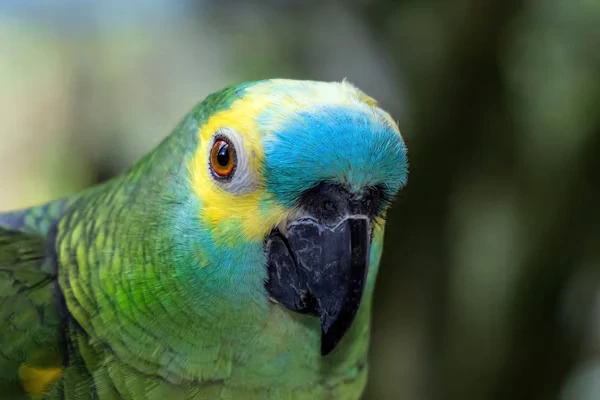
The Blue Fronted Amazon parrot talking ability is among the best in the parrot world. They are known for their clear speech and ability to learn a substantial vocabulary of words and phrases. However, individual speaking ability varies:
- Males generally tend to be better talkers than females, though exceptions exist
- Birds that begin training at a younger age typically develop larger vocabularies
- Consistent, patient training is key to developing talking skills
- Blue Fronted Amazons can learn to mimic household sounds, speech, and even songs
Beyond human speech, understanding your bird’s natural vocalizations is important:
- Morning and evening calls (contact calls to the flock)
- Alarm calls when startled or frightened
- Contented chattering and muttering when relaxed
- “Growling” or hissing when upset or territorial
Conservation Status and Threats
Blue Fronted Amazon parrots are currently listed as Near Threatened by the International Union for Conservation of Nature (IUCN). Their populations face several significant threats:
- Habitat loss due to deforestation and agricultural expansion
- Illegal trapping for the pet trade
- Climate change affecting their natural range
Conservation efforts include:
- Protected areas within their natural range
- Breeding programs to maintain captive populations
- Education initiatives to reduce demand for wild-caught birds
- CITES (Convention on International Trade in Endangered Species) regulations
When considering adding a Blue Fronted Parrot to your family, always ensure you’re purchasing from a reputable breeder who produces captive-bred birds with appropriate documentation.
Is a Blue Fronted Amazon Parrot Right for You?
Before deciding to bring home a Blue Fronted Amazon parrot, honestly assess whether you can meet their needs:
Consider These Factors:
- Time commitment: They require several hours of daily interaction
- Noise tolerance: They can be quite vocal, especially at dawn and dusk
- Financial resources: Initial investment plus ongoing expenses for food, toys, and veterinary care
- Long-term planning: With a lifespan of 40-80 years, who will care for your bird if you cannot?
- Household situation: Are all family members comfortable with a bird? Any allergies?
- Experience level: While adaptable, these birds do best with knowledgeable owners
The Blue Fronted Amazon parrot price typically ranges from $1,000 to $3,000 for a hand-raised baby from a reputable breeder. However, the initial purchase price is just the beginning of your financial commitment.
Frequently Asked Questions (FAQ)
Q: How much does a Blue Fronted Amazon parrot cost? A: The Blue Fronted Amazon parrot price typically ranges from $1,000-$3,000, depending on age, coloration, and training level. However, remember that the lifetime cost of care will far exceed the initial purchase price.
Q: How long do Blue Fronted Amazon parrots live? A: The Blue Fronted Amazon parrot lifespan in captivity averages 40-60 years, with some individuals living up to 80 years with excellent care.
Q: Are Blue Fronted Amazon parrots good talkers? A: Yes, Blue Fronted Amazon parrot talking ability is considered excellent. They can learn numerous words and phrases with clear pronunciation.
Q: Do Blue Fronted Amazon parrots make good pets? A: They can make wonderful companions for the right person, but they require significant time, attention, and proper care to thrive.
Q: How big of a cage does a Blue Fronted Amazon parrot need? A: Minimum cage dimensions should be 36″W x 24″D x 48″H, but larger is always better for these active birds.
Conclusion
The Blue Fronted Amazon parrot offers decades of companionship, entertainment, and affection for those willing to meet their considerable needs. Their intelligence, talking ability, and charismatic personalities make them wonderful companions, but they require a significant commitment of time, resources, and energy.
By understanding the natural behaviors and needs of these remarkable birds, you can create an environment where your Blue Fronted Parrot will thrive. The rewards of this relationship—a intelligent, engaging companion who may be with you for much of your life—make the effort worthwhile for dedicated bird enthusiasts.
Ready to learn more about specific aspects of Blue Fronted Amazon parrot care? Explore our detailed guides on specialized topics including diet, training techniques, and health maintenance.
